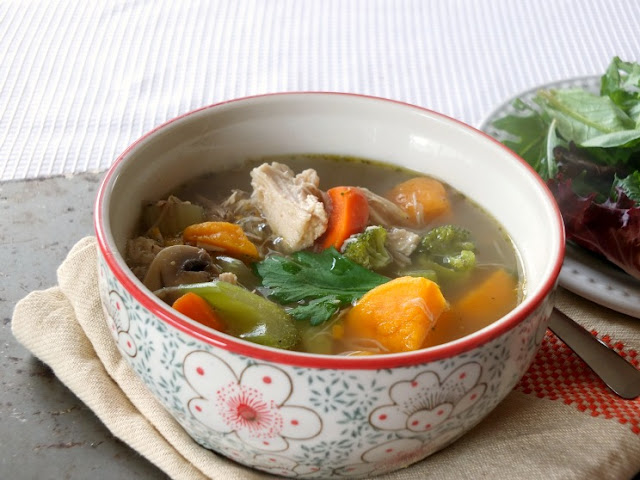She cooks with butter, heavy cream and gobs of cheese. What does that mean for your health?Should you be worried about grandma’s cooking
this holiday? After all, she cooks with butter, heavy cream and gobs of cheese. In fact, she uses all manner of fatty fair in her dishes. You see, grandma grew up in a time when people didn’t worry about fat, and particularly about the saturated fat in butter, cream and cheeses.
But times have changed. Today, experts and guidelines tell us to beware of fat, and particularly saturated fat. They tell us that saturated fats
raise our cholesterol, especially the cholesterol in something called LDL (low-density lipoprotein) or "bad cholesterol."
"Bad cholesterol" is thought to increase the risk of heart disease. But the effect of LDL may depend on its type. For instance, small, dense LDL seems to increase the clogging of our arteries. But large, buoyant LDL seems not to.
What does this have to do with saturated fats and grandma's cooking? Well, saturated fats may lower small, dense LDL, while raising large, buoyant LDL. In other words, saturated fats may be a good thingfor cardiovascular risk – at least in general.
In specific, different saturated fats have different effects. Some affect levels of LDL; others don't. And some raise levels of HDL (high density lipoprotein) or "good cholesterol." The result is likely lower, not greater, cardiovascular risk. (Thanks, grandma).
Despite concerns raised by dietary guidelines, saturated fats do not seem to raise the risk of dying early from heart attacks, stroke or other causes. And while it is true that reducing intake of saturated fats leads to a reduction in heart attacks and stroke in some studies, this is not the case if what replaces those saturated fats is trans-fat or omega-6 oils. In other words, uppity grandchildren are not doing the family any favors by advising grandma to substitutes margarine for her butter; the result could be living to see fewer holidays together.
You see, butter – and full-fat dairy foods more generally – may help protect against
cardiovascular disease and various risk factors such as obesity and
diabetes. And it may be the saturated fats in these foods specifically that confer the benefits.
So the fact that grandma cooks with butter and cream, and smothers her veggies in cheese, is not really an issue (aside from their deliciousness). What is an issue is grandma's holiday
predilection for sugar.
As we point out in a
forthcoming paper in the journal Progress in Cardiovascular Diseases, sugar may matter much more for heart health than saturated fat. Note: We're not talking about the small amounts of sugar found naturally in fresh fruits from the holiday gift basket. Nor are we talking about the vegetables hiding beneath the cheese, the nuts laying beside the nutcracker or the whole-grain stuffing and side dishes. Fruits, vegetables, nuts and whole grains are associated with decided health benefits, despite their sugars and – particularly in the case of nuts – despite their saturated fats. These foods are associated with healthier hearts, healthier weight and longer life.
The sugars in whole foods such as fruits, vegetables, nuts and grains come packaged in reasonable quantities, and in the context of fiber, vitamins, minerals and other healthy constituents. Whole foods are not a problem – be they beets, berries, barley or Brazil nuts (or butter).
The problem is not the sugars that are inherent to foods, but the sugars added to them (generally in obscenely large quantities that wreak havoc in our bodies). Think cakes, cookies, pies, candies, and sugary drinks. These items behave more like sugar-delivery systems for some kind of experiment. And the experiment is not going well for our hearts and health.
The potential detriments of big doses of sugar are too extensive to discuss in detail here. But as
we explain in our paper, diets high in sugar may induce many abnormalities associated with elevated risk for heart disease. The list includes hormone alterations, liver disease, and changes in cholesterol-carrying LDL (in addition to increased risk for obesity and diabetes). In fact, diets high in added sugars have been found to increase the risk of death from cardiovascular disease threefold!
Among the sugars, the fructose-containing kinds – such as table sugar and high-fructose corn-syrup – pose the biggest problem. These sugars are found extensively in processed foods (so if anyone is buying holiday sweets as opposed to preparing them from scratch, that's not the best news for the family). But even if holiday merrymakers avoid industrial sweeteners like HFCS, they still have table sugar to contend with. Americans eat more than 100 pounds of added sugar every year. And grandma's desserts are not helping.
But we love grandma, and we love desserts. And holidays are about much more than nutrition. They are about sharing, enjoying company and savoring treats.
Holiday indulgences in cakes, cookies, pies, candies and sugary drinks are one thing. A daily routine of the same is another.
So this holiday, please enjoy grandma's
homemade recipes and the real foods that define them. Should her dishes include butter or other dairy, there is no need to worry about the saturated fats they contain. Should they be rich in added sugars, then please enjoy the indulgence. But when the holiday is over, it is best to make whole foods such as fruits, vegetables, whole grains and nuts the usual routine. And it is best to leave processed products on the shelf, along with the
added sugars they contain.
And it is best to give grandma a hug.













